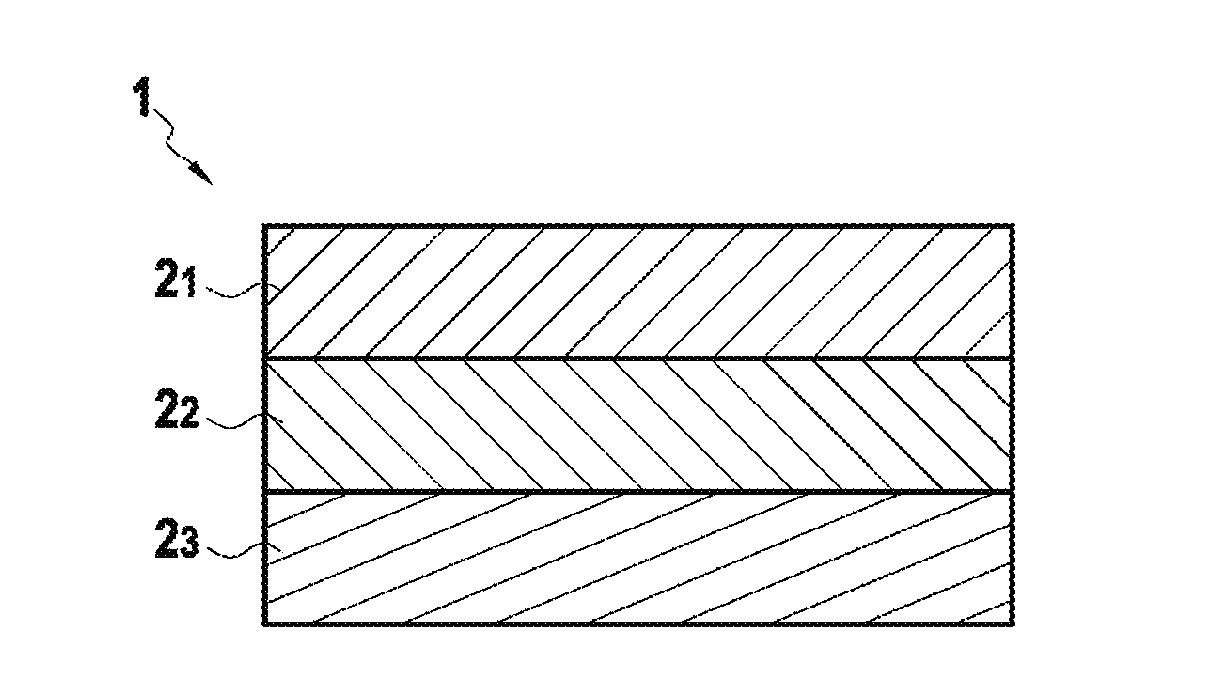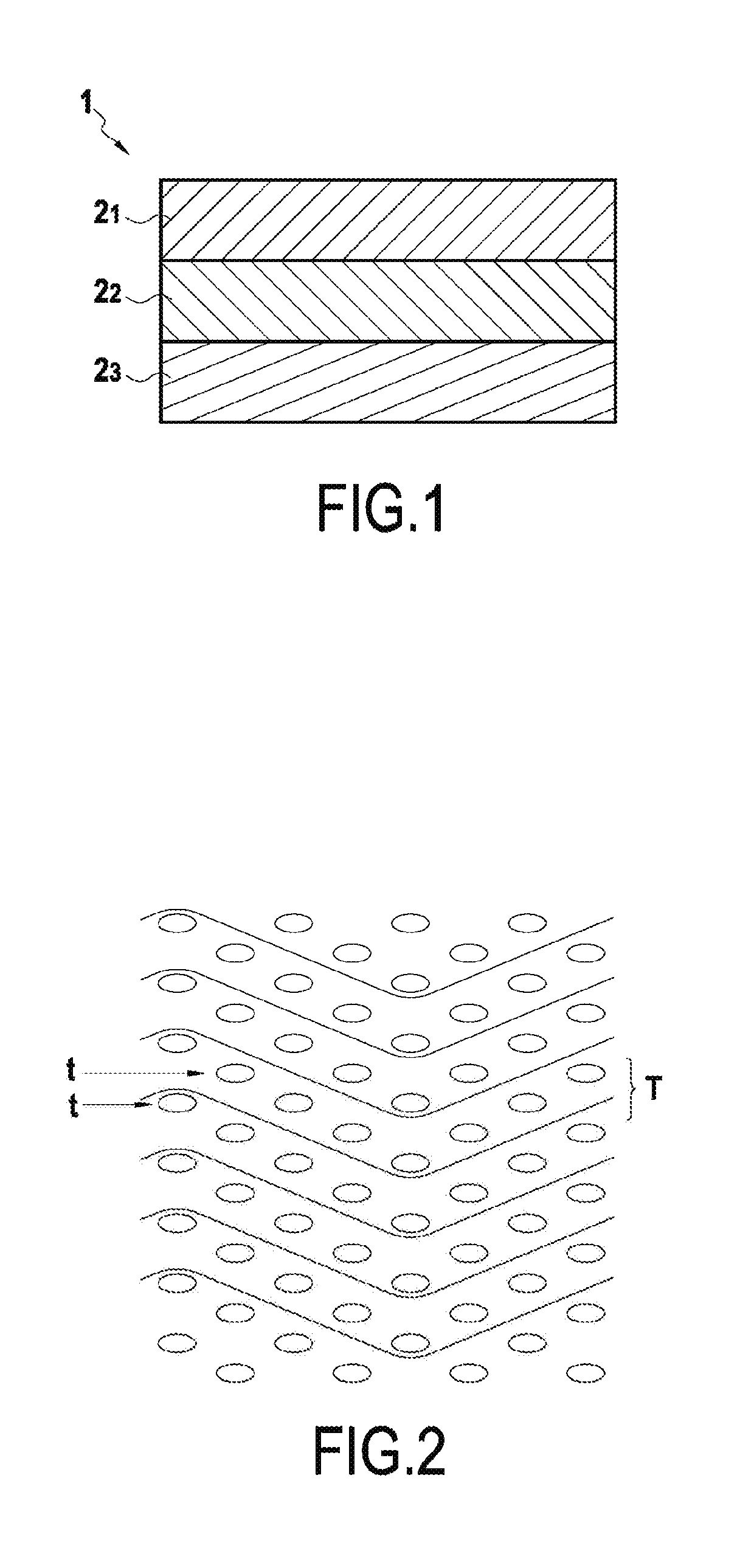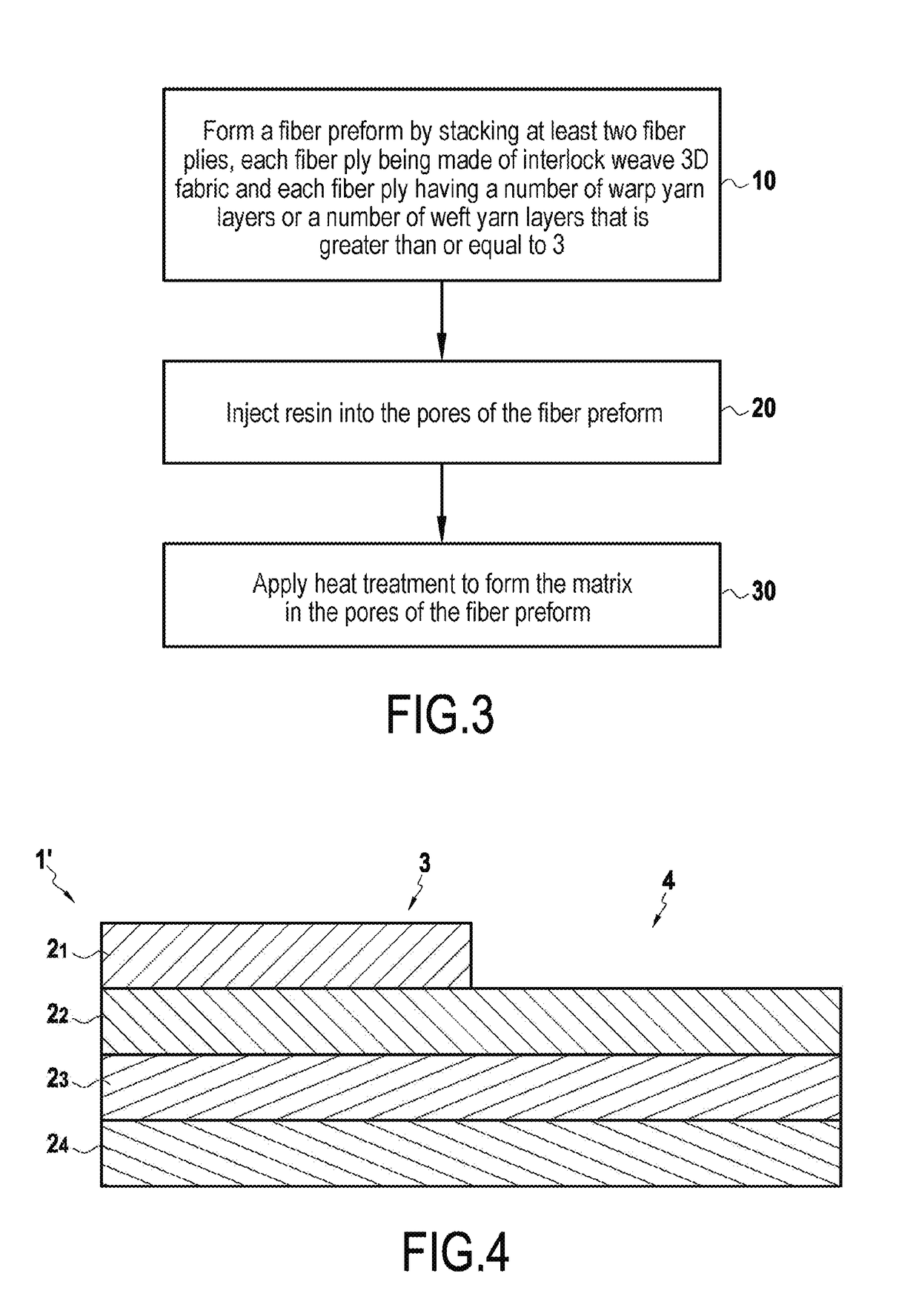A composite material part
a composite material and part technology, applied in the direction of transportation and packaging, ceramic layered products, aircraft power plant components, etc., can solve the problems of structure collapse, structural structure can nevertheless present mechanical properties that are not optimal, etc., to achieve the effect of increasing the energy needed, limiting the propagation of cracks, and relatively low energy needed for crack propagation within the par
- Summary
- Abstract
- Description
- Claims
- Application Information
AI Technical Summary
Benefits of technology
Problems solved by technology
Method used
Image
Examples
Embodiment Construction
[0033]The field of application of the invention relates in particular to parts made of composite material and presenting a resin type matrix for composite materials that are used at relatively low temperatures, typically up to 300° C., or else of a refractory material such as carbon or a ceramic material when making thermostructural composites.
[0034]FIG. 1 shows a stack 1 of three distinct fiber plies 21, 22, and 23 forming a fiber preform suitable for constituting the fiber reinforcement of an example part of the invention. Each of the fiber plies 21, 22, and 23 is made of interlock weave three-dimensional fabric and each of the fiber plies 21, 22, and 23 has a number of warp yarns or a number of weft yarns that is greater than or equal to three. It is possible that at least one of the fiber plies 21, 22, and 23, and possibly each of them, presents both a number of warp yarn layers that is greater than or equal to three and a number of weft yarn layers that is greater than or equal...
PUM
| Property | Measurement | Unit |
|---|---|---|
| temperatures | aaaaa | aaaaa |
| weights | aaaaa | aaaaa |
| mechanical properties | aaaaa | aaaaa |
Abstract
Description
Claims
Application Information
 Login to View More
Login to View More - R&D
- Intellectual Property
- Life Sciences
- Materials
- Tech Scout
- Unparalleled Data Quality
- Higher Quality Content
- 60% Fewer Hallucinations
Browse by: Latest US Patents, China's latest patents, Technical Efficacy Thesaurus, Application Domain, Technology Topic, Popular Technical Reports.
© 2025 PatSnap. All rights reserved.Legal|Privacy policy|Modern Slavery Act Transparency Statement|Sitemap|About US| Contact US: help@patsnap.com



